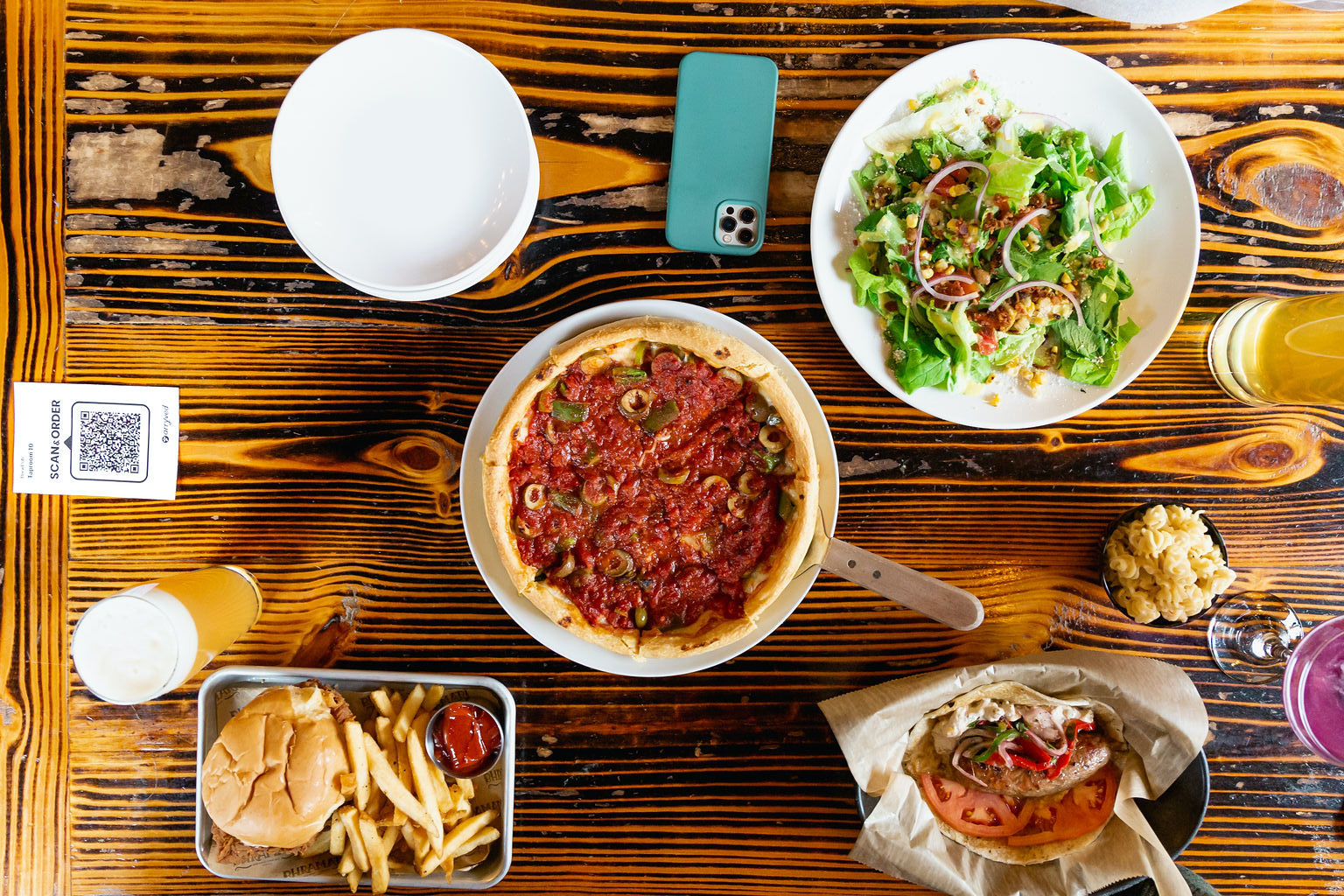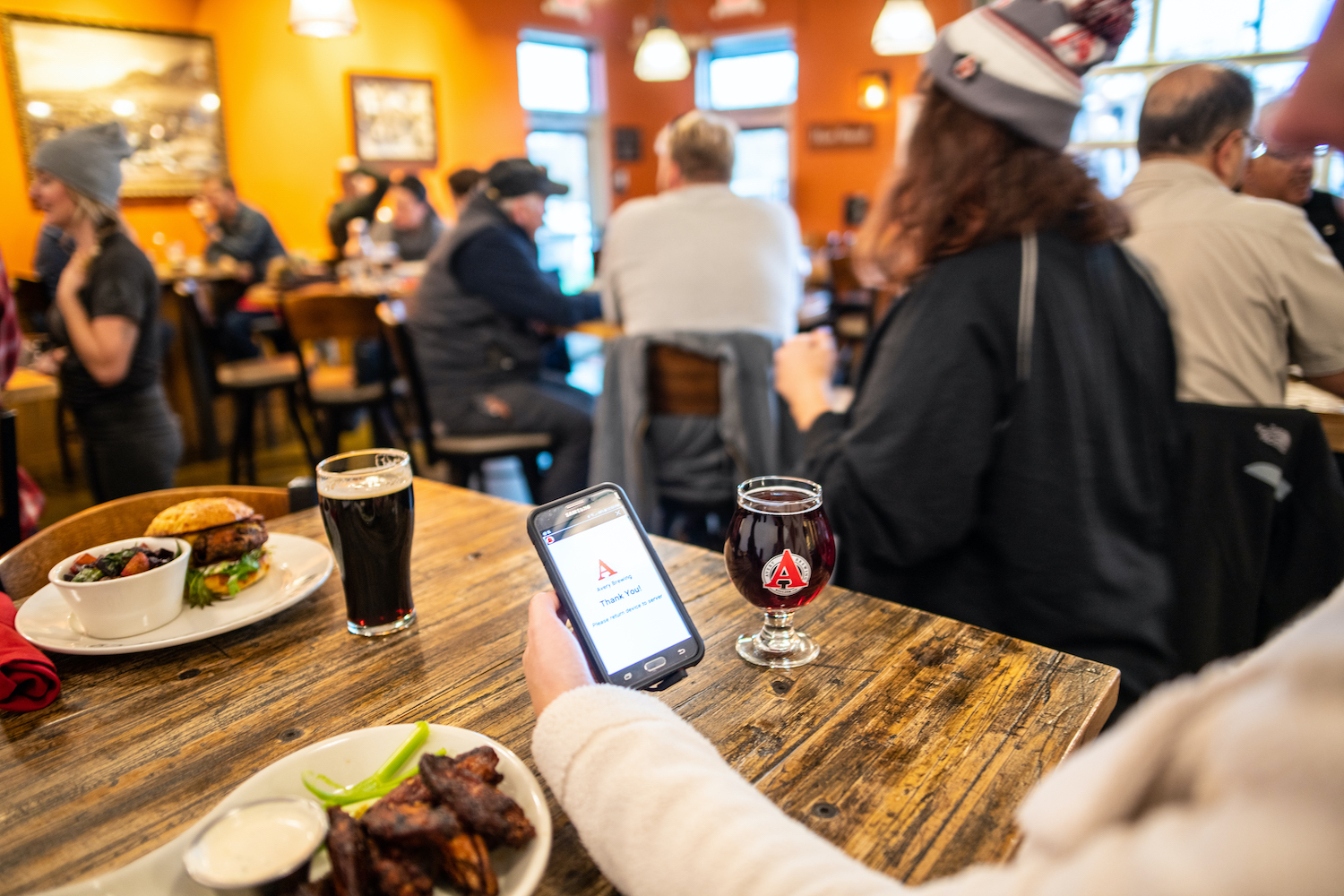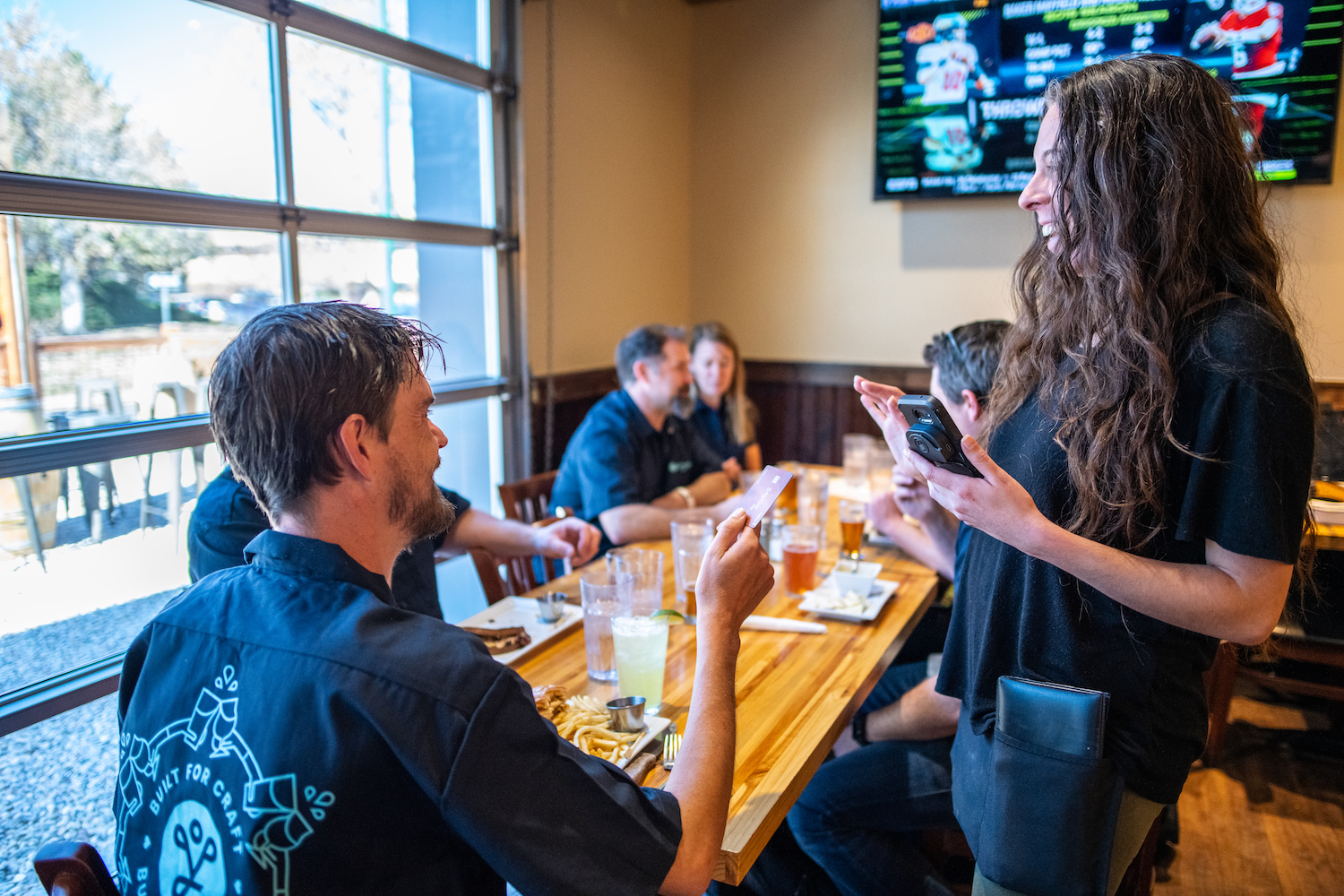How Does a POS System Work in a Restaurant?
A restaurant POS system designed to save you time, money, and headaches. Arryved POS was built by hospitality professionals with your restaurant’s success in mind.

When you picture a restaurant you love, you probably imagine a bustling environment, servers with an impossible amount of food and drinks on their perfectly balanced trays, and delicious smells making their way out from the kitchen.
Also working behind the scenes of every successful restaurant? A point of sale (POS) system.
First, what is a restaurant POS system?
Point of sale is a fancy term for a system that accepts payment at your establishment. Back in the day, there was usually one single cash register at the exit of a restaurant so that patrons could settle up on their way out. POS modernized the checkout experience, making it both digital and mobile, but it also opened the door for restaurant POS systems to do much more than simply be the middleman for transactions.
Let’s dive into how restaurant POS systems improve staff efficiency, enhance guest experiences, and influence better business decisions.
What functions does a restaurant POS system serve?
1. Sales and Ordering
The first function a POS serves is the obvious: it’s where transactions are made. Your restaurant POS system opens tabs, keeps track of the items added to it, and charges the patron’s card the appropriate amount.
That may sound simple, but the technology is nothing short of complex. Ever had a customer ask for a cheeseburger without the cheese and with x, y, and z instead? POS systems make entering complicated orders simple with easy-to-use interfaces that respond with just a quick touch of the finger, versus messy paper tickets.
A mobile POS also means that tabs can be opened and closed any number of ways—from a station at the bar, a roaming server’s device out on the patio, or from any guests’ own phone right where they’re sitting (if the restaurant is using QR code ordering and payments, that is!)
2. Communication Between FOH and BOH
Your front of house and back of house staff are in constant contact, and restaurant POS systems expedite those communications. By enabling servers to digitally send ordered items right to the kitchen after a customer orders them, you’re greatly reducing the amount of time your guests wait for their food to be done. Likewise, your kitchen staff can immediately alert FOH when food is ready to be delivered, ensuring optimal freshness for your hungry guests.

3. Management
One really important job that restaurant POS systems accomplish is making it easier to manage multiple parts of your business, all from one database.
Inventory management means that your POS reports depleted inventory as it’s ordered. It’s important that all of that information is in one cloud-based system that automatically updates in real-time. This is great for both food and beverage ordering (you can’t order from a keg that’s kicked!) and for merchandise sales. Most POS systems will even ping you reminders of when you’re running low and need to order more of something. Synced POS and inventory systems let your hustling staff focus on selling, and your POS can focus on reporting.
Menu management lets you easily manage what’s available to order, depending on the time of day and day of the week.
Venue management involves deciding how your venue is set up (a main dining room, patio, and back room, for example) and choosing menu items available to order based on a guest’s location.
4. Reporting
Arguably the biggest benefit of a restaurant POS system is the robust amount of data you can glean from reporting.
Here are a few insights that your POS should provide:
-
- Menu item performance: What’s selling and what’s not? This is key to know so you are maximizing your profit and minimizing waste. It can also give you good information on what kinds of new menu items you should be rolling out. If you find your salads aren’t selling at the same speed your pizzas are, you know what to add for next month’s special.
- Hourly sales by product: This report shows you the exact time each product is ordered, instead of just the time a customer transacts. (Which comes in handy for those Happy Hour guests that end up staying until close!) Insights into exactly when items are ordered is important because it enables you to curate timed menus with only the most popular items, and you’re not keeping extra ingredients in stock and wasting them.
- Hourly total sales: Track order trends by the hour of the day to determine what times you’re selling the most, and when you need to staff up. Knowing this data also lets you plan fun events when you’re typically slower so you can incentivize visitors!
-
- Weekly sales: It’s key to identify what days of the week you’re busiest and slowest. That data helps you make proactive decisions about your business. If your Tuesdays are consistently slow, that may be the perfect night to schedule a weekly Trivia Night.
-
- Employee performance: This data helps you identify which employees are making the most sales. You need to identify these top sellers because not only do you want to make sure they’re working your busiest nights, you also want them to knowledge share with the rest of your team on what’s working for them.
5. Integrations
Another function of a restaurant POS system is integrating with other systems you’re using. This includes business management softwares, inventory management softwares, and accounting softwares.
Information in your POS and all of your integration systems should sync up, so you can then automate this flow of data from your POS and ecommerce transactions. This will keep you organized, error-free, and confident in making business decisions for your restaurant, knowing you have a holistic view of your company.
6. Additional Features
Most restaurant POS systems offer additional features—sometimes for free, and some for a monthly fee. The features may include:
- Loyalty program: Creating a group of loyal customers is a great way to test products, gain a social following, and connect with the fans that love your restaurant the most.
- QR code ordering and payments: This feature lets customers order from their own devices and supports maximized efficiency with a smaller staff.
- Online store: This allows you to sell anything from branded merchandise to packaged food and drinks in an online storefront.
There are many other features offered out there—make sure your restaurant POS system offers features that make sense for your specific business!

How to narrow down your search for a restaurant POS system
There’s an overwhelming amount of choices out there when you’re shopping for the perfect restaurant POS system. Here are some good questions to ask yourself to narrow it down:
Is the price right? A POS system is an investment. Ask your prospecting POS provider a lot of questions and make sure the monthly fees are transparent and reasonable.
Does it integrate with the tools you’re using or need to use? This is nonnegotiable. If all of your data can’t sync into one comprehensive system, it puts unnecessary hurdles in front of your restaurant’s success. Make sure your POS can use the technology available—POS systems exist to make your life easier, after all.
Does it offer features that are compelling to your restaurant business? Keep your five year plan in mind. Sure, having a loyalty program may not seem like a priority right when you’re starting out, but it can be a key factor in building your fan base a few years down the road.
Is the staff friendly, knowledgeable, and reachable for questions? The people behind your restaurant POS system should be considered part of your staff, and you should vet them as such. If they’re impossible to reach quickly and not that helpful when you do finally get them on the phone, it’s a sign that you need to keep looking.
A restaurant POS system designed to save you time, money, and headaches
Arryved POS was built by hospitality professionals with your restaurant’s success in mind. We continue to perfect the existing tools offered, as well as create more robust tools, because we know firsthand that the hospitality business is ever-evolving.
Get a free demo with a friendly-faced specialist today, and let us prove it to you!
